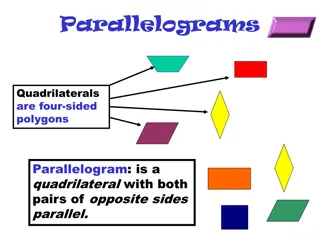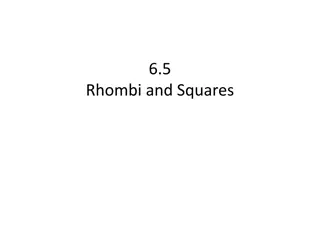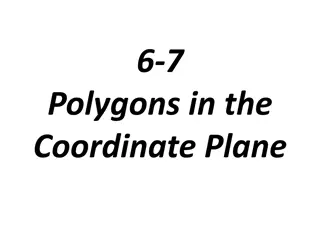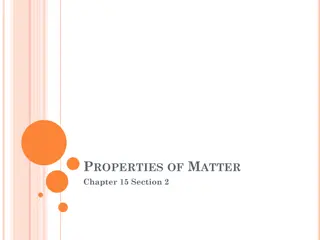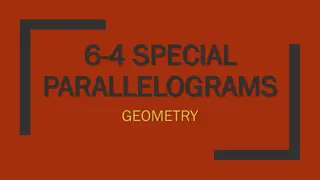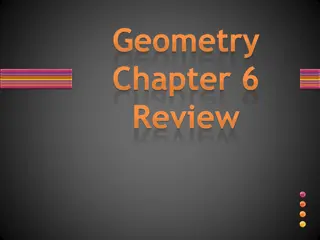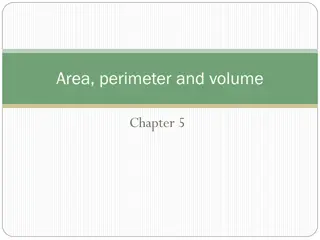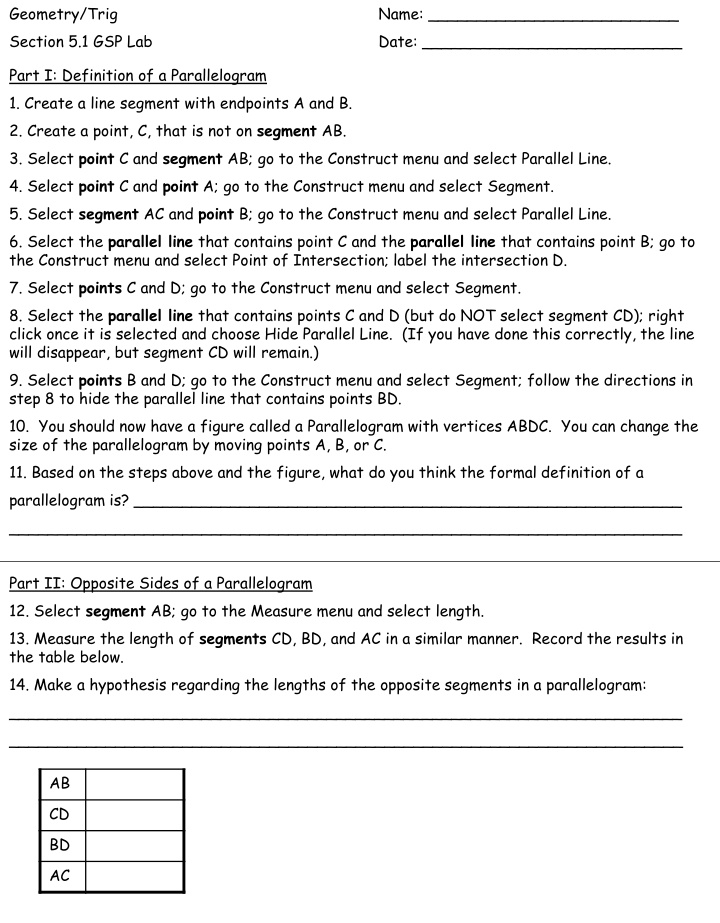
Parallelogram Properties and Proofs
This content covers the definition and properties of a parallelogram, including opposite sides, opposite angles, consecutive angles, and diagonals. It also includes proofs of properties related to parallelograms.
Download Presentation

Please find below an Image/Link to download the presentation.
The content on the website is provided AS IS for your information and personal use only. It may not be sold, licensed, or shared on other websites without obtaining consent from the author. If you encounter any issues during the download, it is possible that the publisher has removed the file from their server.
You are allowed to download the files provided on this website for personal or commercial use, subject to the condition that they are used lawfully. All files are the property of their respective owners.
The content on the website is provided AS IS for your information and personal use only. It may not be sold, licensed, or shared on other websites without obtaining consent from the author.
E N D
Presentation Transcript
Geometry/Trig Section 5.1 GSP Lab Name: __________________________ Date: ___________________________ Part I: Definition of a Parallelogram 1. Create a line segment with endpoints A and B. 2. Create a point, C, that is not on segment AB. 3. Select point C and segment AB; go to the Construct menu and select Parallel Line. 4. Select point C and point A; go to the Construct menu and select Segment. 5. Select segment AC and point B; go to the Construct menu and select Parallel Line. 6. Select the parallel line that contains point C and the parallel line that contains point B; go to the Construct menu and select Point of Intersection; label the intersection D. 7. Select points C and D; go to the Construct menu and select Segment. 8. Select the parallel line that contains points C and D (but do NOT select segment CD); right click once it is selected and choose Hide Parallel Line. (If you have done this correctly, the line will disappear, but segment CD will remain.) 9. Select points B and D; go to the Construct menu and select Segment; follow the directions in step 8 to hide the parallel line that contains points BD. 10. You should now have a figure called a Parallelogram with vertices ABDC. You can change the size of the parallelogram by moving points A, B, or C. 11. Based on the steps above and the figure, what do you think the formal definition of a parallelogram is? _________________________________________________________ ______________________________________________________________________ Part II: Opposite Sides of a Parallelogram 12. Select segment AB; go to the Measure menu and select length. 13. Measure the length of segments CD, BD, and AC in a similar manner. Record the results in the table below. 14. Make a hypothesis regarding the lengths of the opposite segments in a parallelogram: ______________________________________________________________________ ______________________________________________________________________ AB CD BD AC
Part III Opposite Angles & Consecutive Angles of a Parallelogram 15. Select IN ORDER, points A, B, then D to measure ABD; go to the measure menu and select angle. 16. Measure the other three angles in the same manner. Fill in the measures in the table. 17. What do you notice about the opposite angles and the consecutive angles? _______________________________________________________ _______________________________________________________ m ABD m BDC m DCA m CAB Part IV: Diagonals of a Parallelogram 18. Select points A and D; go to the Construct menu and select Segment. 19. Select points C and B; go to the Construct menu and select Segment. 20. Select segments CB and AD; go to the Construct menu and select Point of Intersection; label the intersection as point E. 21. Select points A and E; go to the Measure menu and select distance. 22. Follow the directions in number 21 to measure ED, BE, CE, AD, and CB. Fill in the lengths in the table. AE ED BE CE AD CB 23. Make observations regarding diagonals in parallelograms: _________________________________ _______________________________________________________________________________ _______________________________________________________________________________ Summary: Definition & Properties of Parallelograms 1) Both pairs of ______________ sides of a _________________________ are _________________ (Definition of a Parallelogram). 2) Both pairs of _____________ sides of a __________________________ are _________________. 3) Both pairs of _____________ angles of a _________________________ are ________________. 4) ___________________ angles in a _____________________ are _____________________. 5) The ______________ of a _____________________ ____________ one another.
H G Proofs of Properties in Section 5.1 1) Prove that the opposite sides of a parallelogram are congruent. Given: HGFE is a Parallelogram Prove: HG EF and HE GF F E Statements Reasons 1) 1) 2) HG // EF; HE // GF 2) Definition of a ____________________________ 3) 3) 4) 4) 5) 5) 6) CPCTC 6) HG EF; HE GF H G 2) Prove that the opposite angles of a parallelogram are congruent. Given: HGFE is a parallelogram. Prove: H F F E Statements Reasons 1) 1) 2) 2) 3) 3) Reflexive 4) 4) 5) 5) CPCTC
Summary: Definition & Properties of Parallelograms 1) Definition of a Parallelogram: _______________________________________________ ________________________________________________________________________ 2) ______________________________________________________________________ ________________________________________________________________________ 3) ______________________________________________________________________ ________________________________________________________________________ 4) ______________________________________________________________________ ________________________________________________________________________ 5) ______________________________________________________________________ ________________________________________________________________________ HW: p. 169 WE #5-10 (Draw all diagrams; show all work) These are problems APPLYING the five properties of parallelograms.





